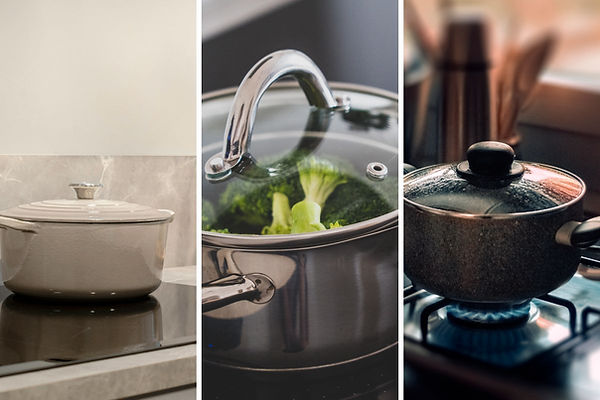
Non-Toxic Materials: Your Guide to Safer Everyday Living
From cookware to clothes and beyond — discover what’s truly safe, what to avoid, and how to make confident, conscious swaps. No fear tactics, no fluff. Just real guidance, rooted in evidence and ethics.
What Are Non-Toxic Materials?
Non-toxic materials are those that don’t release or contain substances known to cause harm to human health. These materials avoid chemicals like:
-
PFAS (forever chemicals)
-
Phthalates (found in plastics)
-
VOCs (in paints and furniture)
-
BPA (in plastic containers and cans)
-
Formaldehyde (in textiles and wood finishes)
True non-toxicity also considers how materials behave with heat, moisture, or long-term contact.
Tip: Just because it says “natural” or “green” doesn’t mean it’s non-toxic. Look for certifications or third-party testing.
Why It Matters
-
Your Health: Toxic exposures have been linked to hormone disruption, asthma, cancer, and neurodevelopmental issues.
-
Our Planet: Many harmful materials pollute ecosystems or can’t be safely recycled.
-
Greenwashing Alert: Brands often use vague claims. Understanding materials helps cut through the noise.

Choosing the right cookware matters—safe materials mean cleaner meals
Non-Toxic Materials by Category
Cookware
The safest materials:
-
Ceramic (non-coated)
-
Stainless steel
-
Cast iron (enameled or bare)
Avoid: Teflon/PTFE, non-stick with unclear coatings
Appliances & Cookware Coatings
Choose:
-
Air fryers with ceramic baskets
-
Glass or stainless steel food containers
Avoid: plastic touching heat or food
Cleaning Products
Go for:
-
Baking soda, vinegar, soap nuts, castile soap
-
Fragrance-free or EWG-rated products
Avoid: ammonia, chlorine bleach, synthetic fragrance
Home Materials
Best options:
-
Low-VOC paints
-
Natural wood, stone, wool
-
Latex or organic cotton mattresses
Avoid: vinyl flooring, flame retardant foam, PVC blinds
Clothing & Textiles
Better materials:
-
GOTS-certified organic cotton
-
TENCEL™, hemp, bamboo (mechanically processed)
Avoid: fast fashion, synthetic fabrics with chemical finishes
Quick Reference - Materials to Avoid and Why
-
PTFE (Teflon): Can release toxic fumes
-
BPA: Hormone disruptor
-
Phthalates: Linked to reproductive harm
-
Formaldehyde: Irritant, potential carcinogen
-
PVC: Contains dioxins and heavy metals

A non-toxic kitchen blends clean design with clean living.
Ready to put these principles into action? Discover our Non-Toxic Gift Guide →
FAQs
What is the most non-toxic cookware?
Fully ceramic or stainless steel with no coatings are top options.
Are bamboo clothes safe?
Only when processed mechanically. Chemical bamboo rayon is not non-toxic.
What materials should I avoid in the kitchen?
Non-stick pans with unclear labels, plastics marked with #3, #6, or #7, and aluminum foil in direct food contact.
What makes something “non-toxic”?
Third-party testing, clear ingredient disclosure, and lack of known toxins.
Is natural always non-toxic?
Not always. Arsenic and lead are natural too. Look beyond the label.
Ready to take the next step?
Creating a healthier home is a journey — and you don’t have to take it alone. Subscribe to Zenda Guide for tips, product picks, and seasonal ideas that make safer, more conscious living simple and inspiring.
Continue your journey:
-
Eco-Friendly Home Guide — Discover sustainable swaps and design ideas for every room.
-
Non-Toxic Kitchen Guide — Learn how to choose safer cookware, tools, and appliances for your kitchen.
